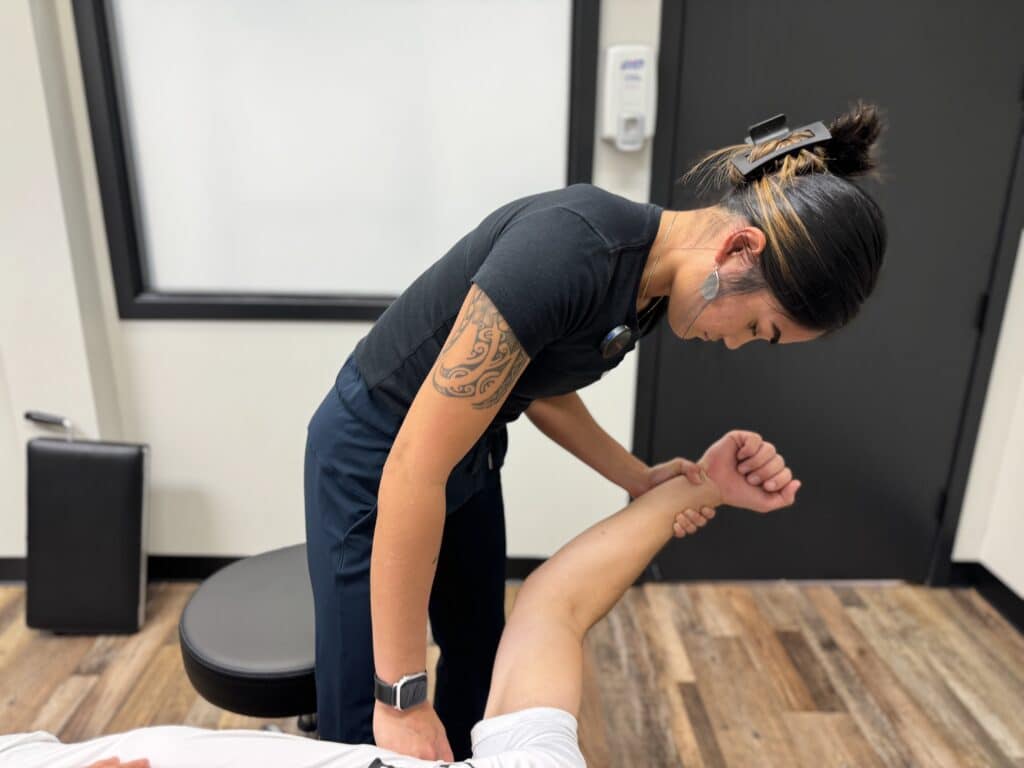Understanding athletic injuries
Athletic injuries are common among athletes and can range from minor sprains to more serious fractures and dislocations. Understanding these injuries is crucial for athletes, coaches, and healthcare professionals to provide the appropriate treatment and rehabilitation. Here are some key points to consider:
- Athletic injuries can result from sudden trauma or overuse of muscles and joints during sports or exercise.
- Common types of athletic injuries include sprains, strains, fractures, dislocations, and tendon injuries.
- Prompt assessment and treatment of athletic injuries are essential to prevent further damage and promote recovery.
- Specialized treatments, such as physiotherapy, sports massage, and custom orthotics, can help athletes recover and regain their performance levels.

Importance of specialized treatments
Athletes require special treatments for their injuries as they often have unique and demanding physical requirements. Professional practitioners with expertise in sports medicine can provide targeted, effective treatments for athletic injuries. These specialized treatments aim to not only alleviate immediate pain and discomfort but also optimize the athlete’s recovery and performance in the long term. The focus on sports-specific rehabilitation, injury prevention, and performance enhancement makes specialized treatments crucial for athletes to regain their fullest potential post-injury.
Common types of athletic injuries
Athletes often experience common types of injuries due to their active lifestyles. These can include sprains, strains, fractures, and dislocations. These injuries typically occur during high-impact sports or activities that involve repetitive motion. It’s important to recognize the signs of these injuries and seek specialized treatment to ensure a full recovery and prevent further complications.
Specialized treatment options
Specialized treatment options for athletic injuries are essential for a speedier recovery. These treatments are tailored to the specific needs of athletes and can include specialized physical therapy, regenerative medicine techniques, and minimally invasive procedures. Regenerative medicine utilizes the body’s natural healing mechanisms, such as stem cell therapy and platelet-rich plasma (PRP) injections, to promote tissue repair and regeneration. Minimally invasive procedures involve less trauma to the body and can expedite the healing process, allowing athletes to return to their sport sooner. Specialized manual therapy focuses on exercises and techniques designed to target the injury and improve strength and flexibility. These options are often favored by athletes due to their ability to enhance recovery and restore optimal performance.
Manual therapy for athletic injuries
Manual therapy is a crucial part of treating athletic injuries. It helps athletes regain strength, flexibility, and mobility, allowing them to return to their sport safely and effectively. Here are some key points about manual therapy for athletic injuries:
- Restoring Functionality: Physical therapy focuses on restoring functionality to injured muscles, tendons, and ligaments through targeted exercises and stretches.
- Preventing Future Injuries: By addressing muscular imbalances and weaknesses, physical therapy can help prevent future injuries, allowing athletes to perform at their best.
- Customized Treatment Plans: Each athlete receives a customized treatment plan tailored to their specific injury, ensuring the most effective rehabilitation.
- Collaboration with Healthcare Professionals: Manual therapists work closely with other doctors and other healthcare professionals to ensure a comprehensive approach to injury treatment.
Overall, manual therapy plays a pivotal role in the recovery process for athletes, helping them regain strength and function while minimizing the risk of reinjury.
Strength and conditioning programs
Strength and conditioning programs are essential for athletes to improve their physical performance and prevent injuries. These programs focus on enhancing strength, flexibility, agility, and endurance, which are crucial for athletes to excel in their respective sports. Strength training involves exercises that increase muscle strength and power, while conditioning encompasses activities that improve cardiovascular fitness and overall physical endurance. By incorporating these programs into their training regimen, athletes can enhance their athletic abilities and reduce the risk of sports-related injuries.
The role of rest and recovery
Rest and recovery play a crucial role in the healing process for athletic injuries. It allows the body to repair damaged tissues and reduces the risk of further injury. Rest gives the body time to heal and rebuild, while recovery techniques like icing, stretching, and proper nutrition aid in this process. Adequate rest and recovery can also prevent chronic injuries and improve overall performance.
Preventing future athletic injuries
To prevent future athletic injuries, it is crucial to focus on strengthening the muscles and improving flexibility. This can be achieved through tailored exercise programs and proper warm-up and cool-down routines before and after physical activity. Additionally, using appropriate gear and ensuring proper technique during sports activities can significantly reduce the risk of injury. Developing a balanced training regimen that includes both strength and endurance exercises can also help in building resilience against future injuries. It is important to consult a sports medicine specialist or a physical therapist to create a personalized injury prevention plan based on individual needs and athletic activities.
Holistic approach to athletic injury treatment
A holistic approach to athletic injury treatment considers the whole body and aims to not only treat the injury but also improve overall well-being. It involves a combination of manual therapy, nutrition, mental health support, and alternative therapies to promote healing and reduce the risk of future injuries. This approach emphasizes the importance of addressing the root cause of the injury, improving strength and flexibility, and making lifestyle changes to support long-term athletic performance.
Conclusion
After carefully examining the specialized treatments available for athletic injuries, it is clear that these treatments play a critical role in the recovery and performance of athletes. The use of specific treatments tailored to the nature of the injury and the athlete’s condition can significantly improve the healing process and reduce the risk of future setbacks. By incorporating these specialized treatments into their recovery plans, athletes can expect to return to their sport more effectively while minimizing the potential for recurrent injuries.
Exercises You Can Do at Home after a Visit to the Chiropractic Clinic
Stay active at home with exercises from ‘Exercises You Can Do at Home after a Visit to the Chiropractic Clinic’.
Read MoreAthletic Therapy: A Vital Component in Sports Rehabilitation
Discover the importance of athletic therapy in sports rehabilitation in our insightful blog on ‘Athletic Therapy: A Vital Component in Sports Rehabilitation’.
Read MoreA Comprehensive Guide to Spinal Therapy for Athletes
Discover the benefits of spinal therapy for athletes in our comprehensive guide ‘A Comprehensive Guide to Spinal Therapy for Athletes’.
Read MoreHow Chiropractic Techniques are Advancing in Pain and Injury Treatment
Discover the latest advancements in pain and injury treatment through innovative chiropractic techniques.
Read MoreSpine Rehabilitation: How Corrective Exercises Can Help with Posture and Pain Relief
Discover how corrective exercises in spine rehabilitation relieve pain and improve posture – read more now!
Read MoreCorrective Exercises: Your Secret Weapon Against Chronic Pain
Combat chronic pain with corrective exercises featured in ‘Corrective Exercises: Your Secret Weapon Against Chronic Pain’.
Read More




